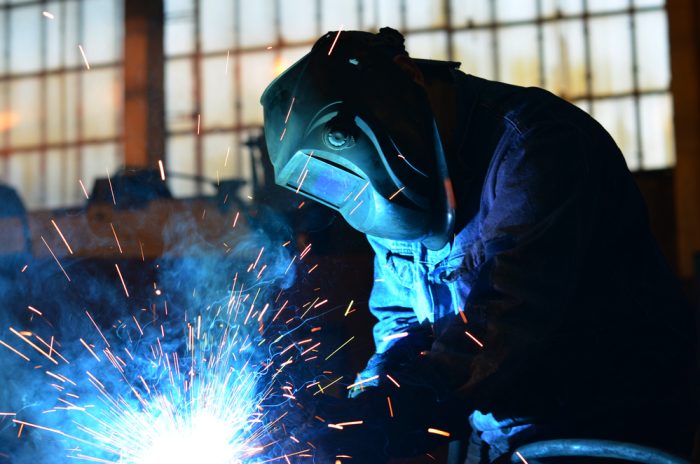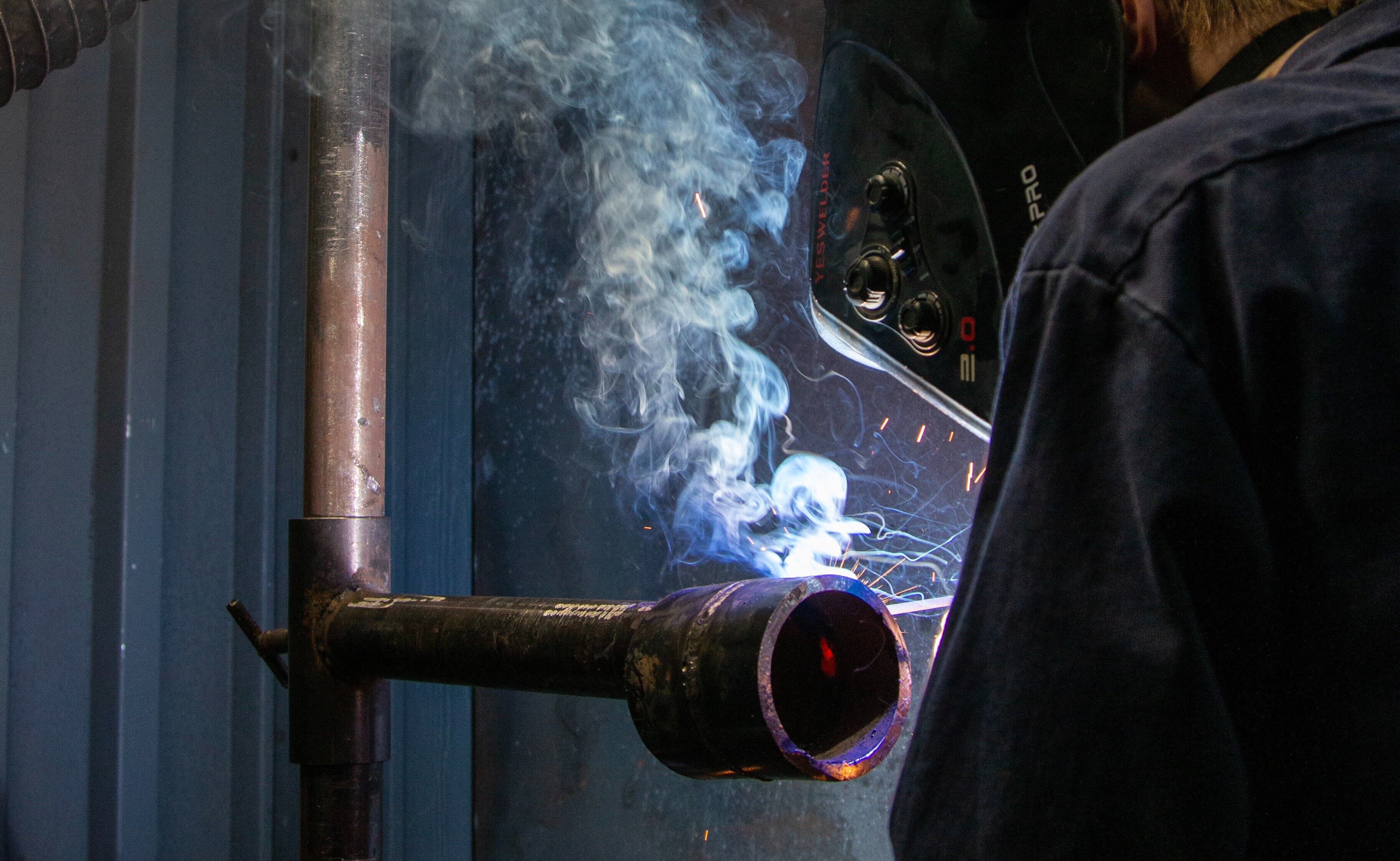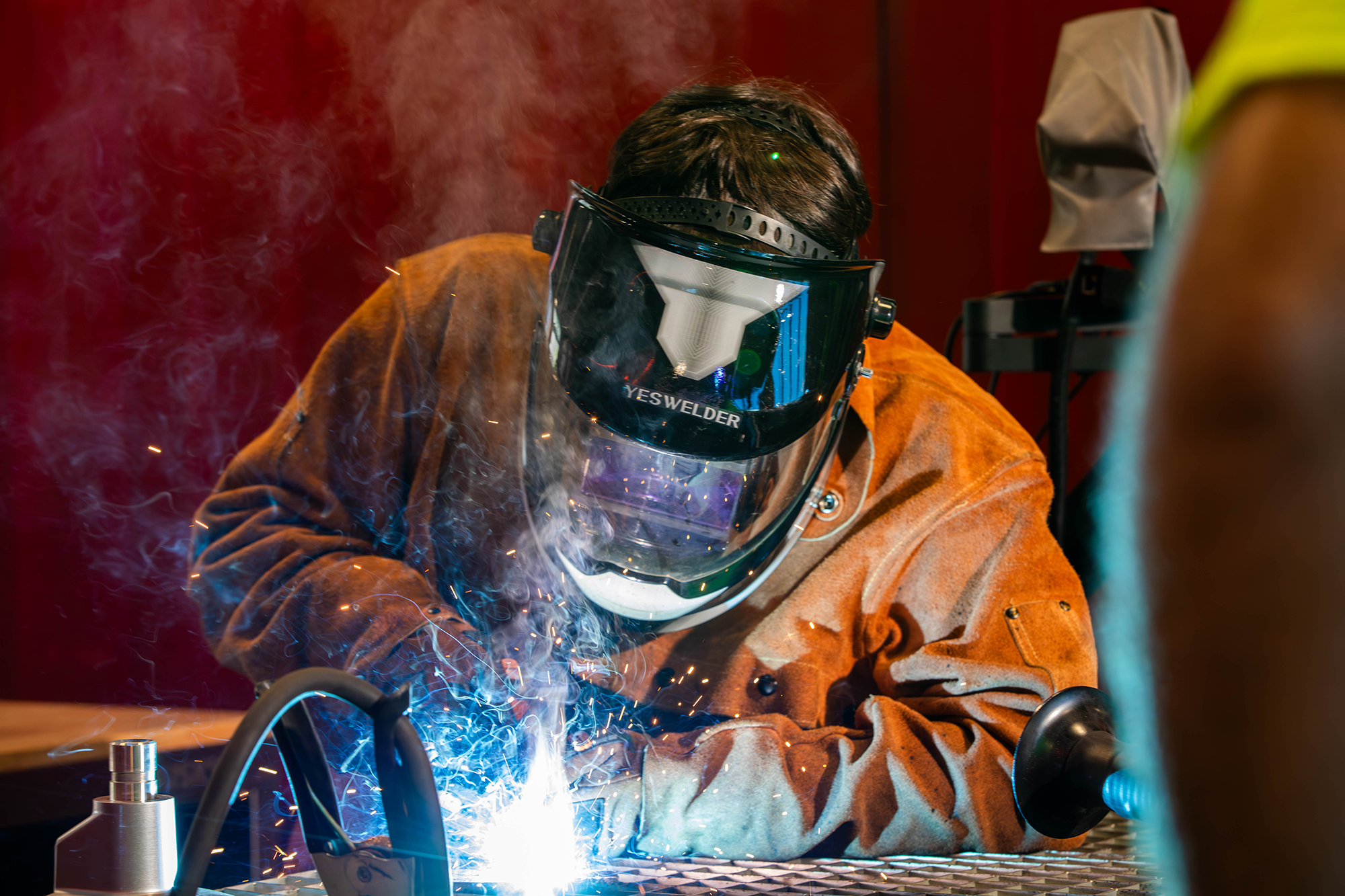Overlooked causes of weld misalignment and Belgrade Fabrication’s methods
Wiki Article
Typical Welding Repair Issues and Exactly How to Address Them Successfully
Welding repair services frequently run into a variety of issues that can threaten the stability of the last item. Usual problems include inadequate penetration, porosity, and imbalance, amongst others. Each defect offers unique obstacles that need specific methods for resolution. Comprehending these problems is vital for welders intending to enhance their results and skills. This conversation will certainly check out these typical welding repair work concerns and reliable methods to address them.Poor Infiltration
Inadequate penetration happens when the weld metal fails to totally fuse with the base product, causing weak joints and possible structural failings. This concern typically comes from not enough heat input, wrong electrode angle, or inappropriate welding speed. Welders might encounter insufficient penetration due to a mistake of the required criteria for a details material density or kind. Furthermore, contamination on the base material's surface area can prevent effective bonding, aggravating the issue. To address inadequate infiltration, welders should guarantee ideal setups on their tools and maintain a tidy job surface area. Normal assessment of welds is recommended to recognize any shortages early, permitting prompt improvements and the avoidance of jeopardized structural integrity in bonded settings up.Porosity
Porosity is an usual defect in bonded joints that manifests as tiny gas bubbles entraped within the weld metal. This flaw can compromise the honesty of the weld, causing lowered stamina and possible failure under tension. Montana Mobile Welding and Repair Belgrade. Porosity commonly occurs from contamination, moisture, or incorrect welding strategies, which allow gases to leave into the molten weld swimming pool. To address porosity, welders should ensure appropriate surface area prep work, preserve a tidy working setting, and make use of ideal welding parameters. Additionally, selecting the right filler product and protecting gas can mitigate gas entrapment. Routine examination and testing of welds can assist recognize porosity early, assuring prompt corrective actions are taken, thereby preserving the high quality and reliability of the bonded structureMisalignment
Imbalance in welding can arise from different variables, including incorrect setup and thermal development. Understanding the root triggers is important for reliable resolution. A number of modification methods are available to straighten parts and guarantee structural integrity.Sources of Imbalance
Welding misalignment often stems from a range of underlying issues that can endanger architectural stability. One key reason is improper fit-up of parts before welding, which can bring about voids and uneven surface areas. Variations in thermal development during the welding process can also lead to distortion, especially if the materials being joined have different coefficients of growth. Additionally, insufficient clamping and fixturing might fall short to hold parts safely in position, leading to movement during welding. Poorly maintained equipment, consisting of welding equipments and tools, might present incongruities in the weld bead, further adding to imbalance. Driver error, stemming from insufficient training or experience, can additionally play a considerable function in developing misaligned welds.
Modification Methods Offered
Attending to imbalance successfully needs a combination of corrective strategies tailored to the particular problems at hand. One common method is the usage of jigs or components to hold elements in the appropriate placement throughout welding, ensuring regular placement. In addition, preheating the products can aid lower distortion and enhance fit-up. For substantial imbalance, mechanical adjustment techniques, such as using hydraulic jacks or clamps, can be utilized to fix the setting prior to welding. Post-weld warm therapy might additionally be required to soothe stresses brought on by imbalance. Careful evaluation and adjustment throughout the arrangement stage can stop imbalance concerns from coming to be substantial issues, promoting a smoother welding procedure and enhancing total architectural stability.Distortion
Distortion is an usual obstacle in welding that can develop from different elements, consisting of irregular heating and cooling. Comprehending the reasons for distortion is important for implementing effective prevention techniques. Resolving this issue not only enhances structural integrity but additionally improves the general high quality of the weld.Sources of Distortion
When based on the extreme heat of welding, products usually go through modifications that can result in distortion. This phenomenon mostly arises from thermal growth and contraction during the welding process. As the weld area warms up, the material expands; upon cooling, it acquires, which can create interior stresses. Furthermore, irregular heating across a workpiece can intensify these stress and anxieties, resulting in warping or bending. The sort of product additionally plays a significant duty; steels with differing thermal conductivity and coefficients of growth may respond in different ways, causing unpredictable distortions. Additionally, bad joint layout and insufficient fixturing can add to imbalance during welding, increasing the likelihood of distortion. Recognizing these causes is crucial for efficient welding repair work and avoidance techniques.Avoidance Techniques
Efficient avoidance methods for distortion throughout welding emphasis on regulating heat input and ensuring proper joint layout. Preserving a consistent heat input assists to decrease thermal development and tightening, which can cause distortion. Using techniques such as preheating the work surface can additionally minimize the temperature level slope, promoting consistent home heating. In addition, picking ideal joint layouts, such as T-joints or lap joints, can improve security and lower tension concentrations. Carrying out appropriate fixturing to secure the workpieces in area further help ultrasonic welding in keeping placement during the welding procedure. Ultimately, staggered welding series can disperse heat extra equally, stopping localized distortion. By applying these methods, welders can significantly reduce the likelihood of distortion and Full Report improve the general quality of their welds.Breaking
Breaking is a common issue encountered in welding fixings, usually resulting from numerous aspects such as improper cooling prices, product selection, or insufficient joint prep work. The incident of cracks can substantially endanger the honesty of the weld, resulting in prospective failures throughout operation. To address this problem, welders should initially assess the origin, making certain that products are suitable and properly selected for the specific application. In addition, managing the air conditioning rate during the welding process is vital; rapid cooling can cause anxiety and cause fracturing. Correct joint layout and prep work also add to minimizing the danger. Executing these methods can enhance weld quality and durability, ultimately lowering the likelihood of breaking in completed weldments.
Incomplete Combination
A significant concern in welding fixings is insufficient blend, which occurs when the weld steel does not sufficiently bond with the base material or previous weld passes - Montana Mobile Welding and Repair Belgrade Fabrication. This problem can bring about weaknesses in the joint, possibly endangering the stability of the welded framework. Elements adding to incomplete combination include insufficient heat input, inappropriate welding method, and contamination of the surfaces being signed up with. To address this problem efficiently, welders must guarantee appropriate pre-weld cleansing and surface preparation, along with adjust their welding criteria to achieve adequate infiltration and blend. Normal examination during the welding procedure can additionally help recognize insufficient combination early, enabling prompt rehabilitative actions to improve the overall top quality of the weldOverheating
While welding repairs can improve architectural honesty, overheating presents a substantial challenge that can lead to material destruction. Excessive warm during welding can change the mechanical residential or commercial properties of metals, leading to decreased toughness, enhanced brittleness, and warping. This sensation is particularly vital in high-stress applications where structural integrity is paramount. Recognizing getting too hot can involve visual assessments for staining or distortion, in addition to monitoring temperature level during the welding process. To mitigate the dangers connected with overheating, welders ought to utilize suitable methods, such as controlling warm input, changing traveling speed, and making use of appropriate filler products. In addition, applying pre- and post-weld warmth therapies can help recover product residential properties and boost the total quality of the repair, metal man welder making sure lasting efficiency and safety.Frequently Asked Concerns
What Are the Typical Indicators of a Welding Issue?

Exactly How Can I Check My Welds for High quality?
To evaluate welds for high quality, one can utilize aesthetic inspections, ultrasonic screening, and radiographic techniques. Each technique guarantees structural honesty, determines problems, and verifies adherence to specified requirements, ultimately improving the integrity of the bonded joints.What Safety Preventative Measures Should I Take While Welding?
When welding, one should focus on safety and security by putting on ideal personal protective equipment, making sure appropriate air flow, protecting combustible products away, preserving a tidy office, and being conscious of surroundings to avoid injuries and accidents.Can I Repair a Weld Without Redesigning the Entire Joint?
Repairing a weld without redoing the whole joint is possible, relying on the damage (Montana Mobile Welding and Repair). Strategies such as grinding, adding filler product, or using a welding procedure can properly address specific problems while maintaining the bordering structureWhat Tools Are Vital for Effective Welding Repair Works?
Essential tools for effective welding repair work consist of a welding maker, wire brush, grinder, protective equipment, clamps, and filler products. Each tool plays an important duty in making sure quality and safety and security during the repair service procedure. Porosity normally arises from contamination, moisture, or incorrect welding techniques, which allow gases to run away into the liquified weld swimming pool. Badly kept tools, consisting of welding devices and tools, might present incongruities in the weld bead, further contributing to misalignment. When subjected to the extreme warmth of welding, materials usually undertake modifications that can lead to distortion. Breaking is a typical problem run into in welding fixings, usually resulting from different variables such as improper cooling prices, material selection, or insufficient joint preparation. A substantial issue in welding repair services is incomplete combination, which takes place when the weld steel does not sufficiently bond with the base product or previous weld passes.Report this wiki page